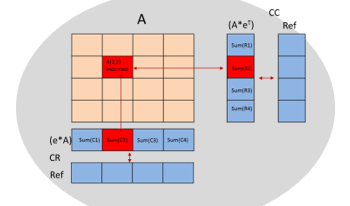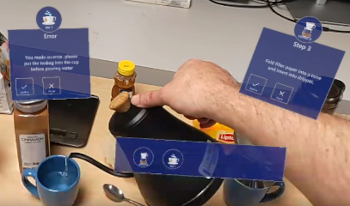
With artificial-intelligence (AI) becoming the mainstream approach to solve a myriad of problems across industrial, automotive, medical, military, wearables and cloud, the need for high-performance, low-power embedded devices are stronger than ever. Innovations around designing an efficient hardware accelerator to perform AI tasks also involves making them fault-tolerant to work reliability under varying stressful environmental conditions. These embedded devices could be deployed under varying thermal and electromagnetic interference conditions which require both the processing blocks and on-device memories to recover from faults and provide a reliable quality of service. Particularly in the automotive context, ASIL-B compliant AI systems typically implement error-correction-code (ECC) which takes care of single-error-correction, double-error detection (SECDED) faults. ASIL-D based AI systems implement dual lock step compute blocks and builds processing redundancy to reinforce prediction certainty, on top of protecting its memories. Fault-tolerant systems take it one level higher by tripling the processing blocks, where fault detected by one processing element is corrected and reinforced by the other two elements. This becomes a significant silicon area adder and makes the solution an expensive proposition. In this paper we propose novel techniques that can be applied to a typical deep-learning based embedded solution with many processing stages such as memory load, matrix-multiply, accumulate, activation functions and others to build a robust fault tolerant system without linearly tripling compute area and hence the cost of the solution.

Intelligence assistance applications hold enormous potential to extend the range of tasks people can perform, increase the speed and accuracy of task performance and provide high quality documentation for record keeping. However, the computational complexity of modern perception and reasoning techniques based on massive foundation model networks cannot run on devices at the edge. A remote server can be used to offload computation but latency and security concerns often rule this out. Distillation and quantization can compress networks but we still face the challenge of obtaining sufficient training data for all possible task executions. We propose a hybrid ensemble architecture that combines intelligent switching of special purpose networks and a symbolic reasoner to provide assistance on modest hardware while still allowing robust and sophisticated reasoning. The rich reasoner representations can also be to identify mistakes in complex procedures. Since system inferences are still imperfect, users can be confused about what the system expects and get frustrated. An interface which makes the capabilities and limitations of perception and reasoning transparent to users dramatically improves the usability of the system. Importantly, our interface provides feedback without compromising situational awareness through well designed audio cues and compact icon-based feedback.

We present a high-quality sky segmentation model for depth refinement and investigate residual architecture performance to inform optimally shrinking the network. We describe a model that runs in near real-time on mobile device, present a new, highquality dataset, and detail a unique weighing to trade off false positives and false negatives in binary classifiers. We show how the optimizations improve bokeh rendering by correcting stereo depth misprediction in sky regions. We detail techniques used to preserve edges, reject false positives, and ensure generalization to the diversity of sky scenes. Finally, we present a compact model and compare performance of four popular residual architectures (ShuffleNet, MobileNetV2, Resnet-101, and Resnet-34-like) at constant computational cost.

A color image is the result of a very complex physical process. This process involves both light reflectance due to the surface of the object and the sensor. The sensor is the human eye or the image acquisition system. To avoid metamerism phenomena and to give better rendering to the color images resulting from the synthesis, it is sometimes necessary to work in the spectral field. Now, we meet two classes of methods that enable the closest spectral image to be produced from color images. The first method uses circular and exponential functions. The second method uses the Penrose inverse or the Wiener inverse. In this article, we first of all describe the two methods used in a variety of fields from image synthesis to colorimetry not to forget satellite imagery. We then propose a new method linked with the neural network so as to improve the first two approximation methods. This new method can also be used for calibrating most of color digitization systems and sub wavelengths color array filters.